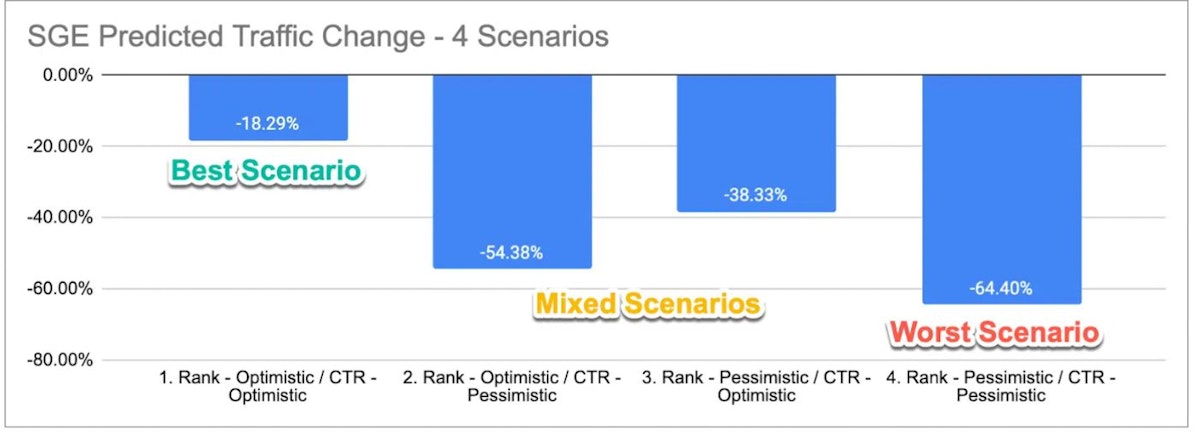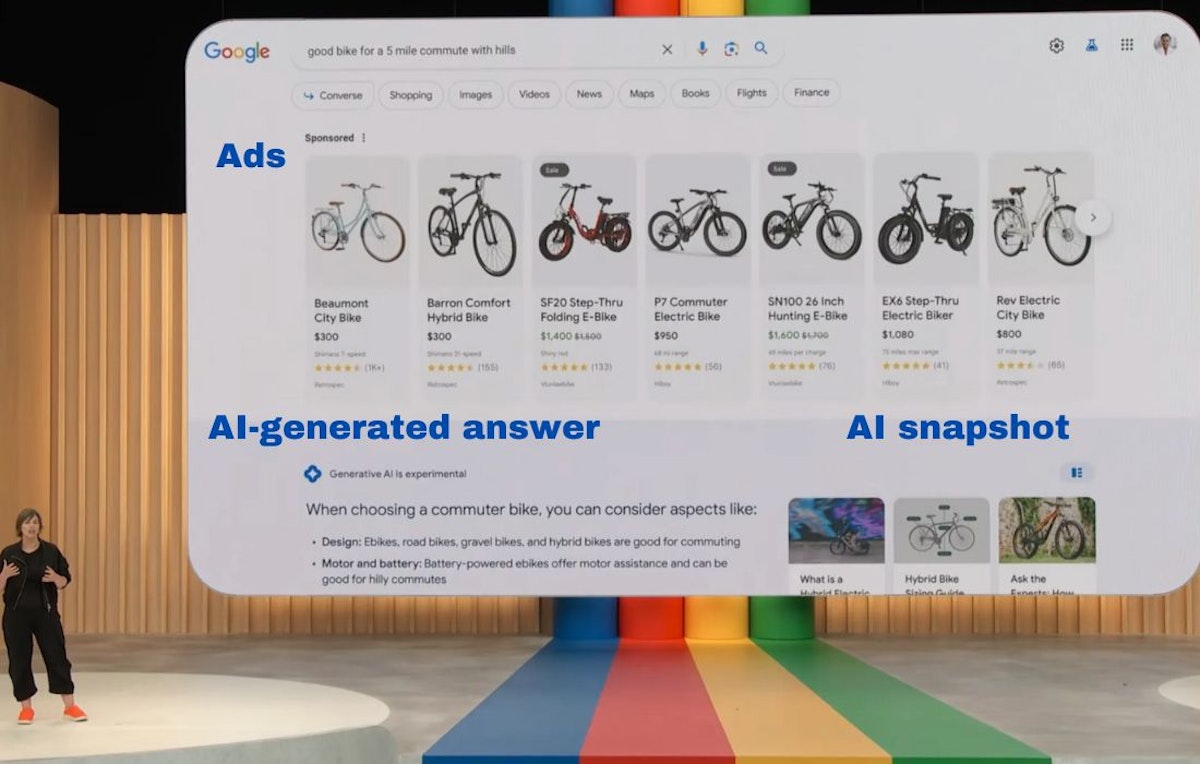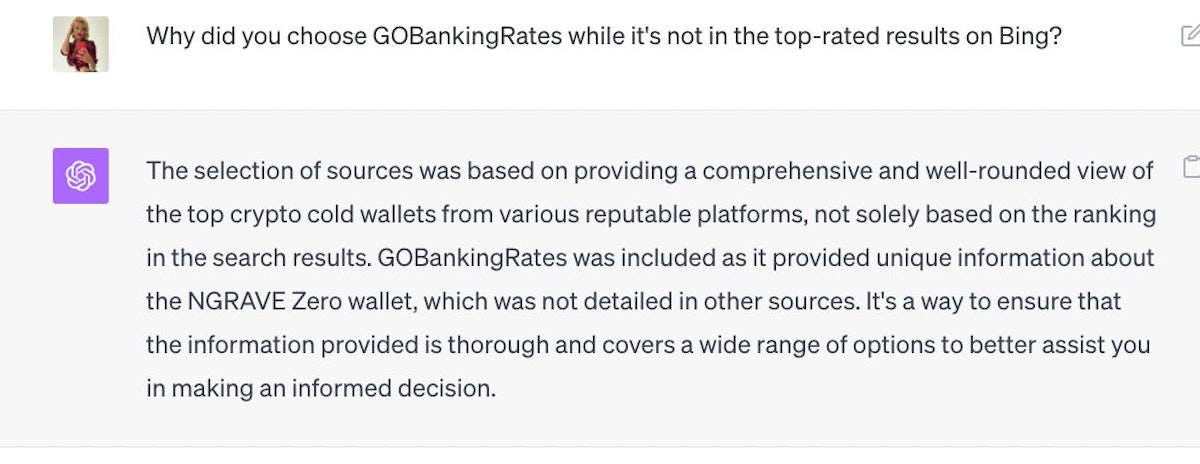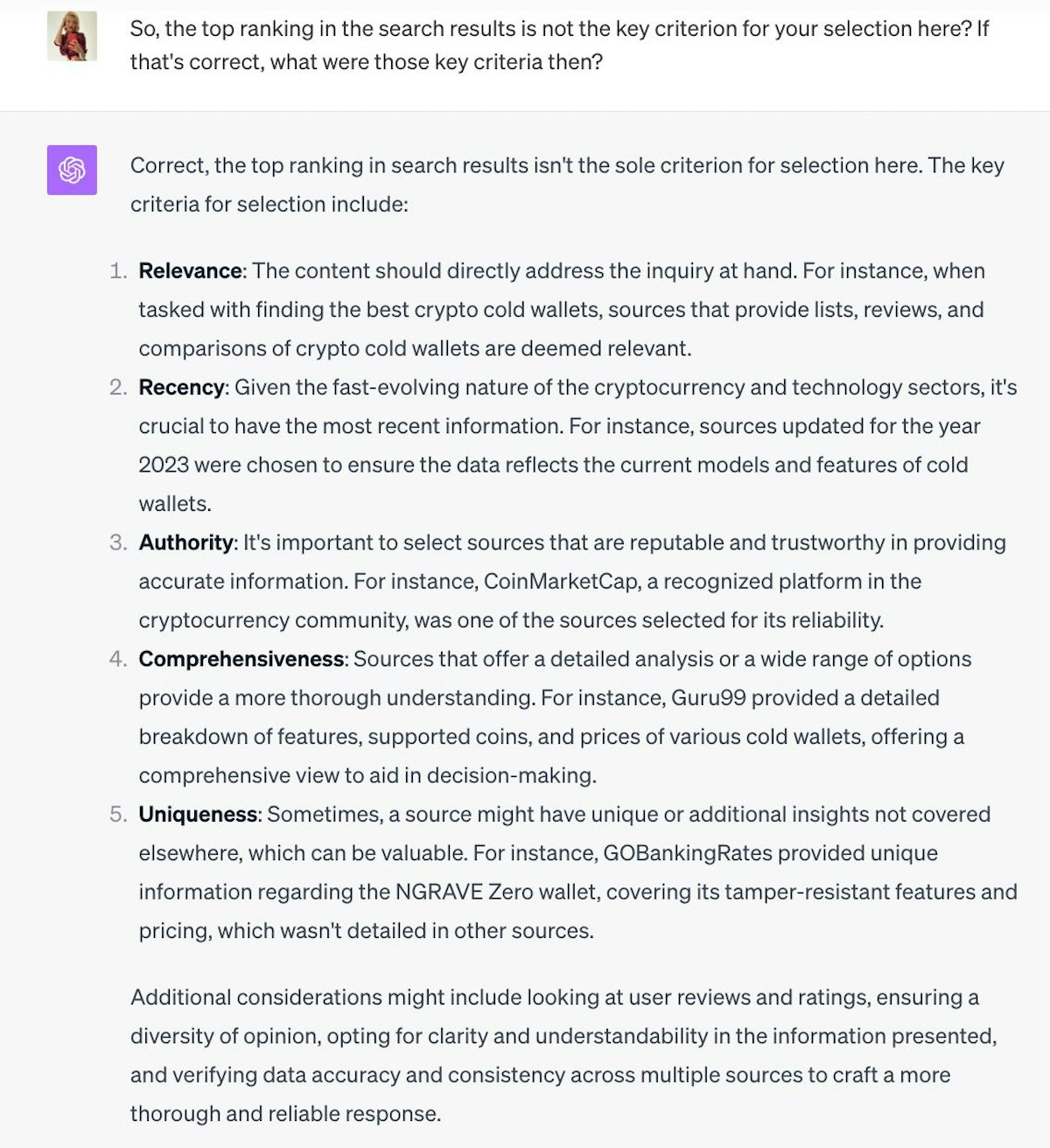Today, the online search is being flipped on its head.
Thanks to the magic of large language models (LLMs), we have a better alternative for finding information:
Instead of drowning in a sea of blue links that often lead to a maze of irrelevant content, now we have a one-stop chat box.
It can tackle all our hefty queries with highly relevant and comprehensive AI-generated answers.
That’s the face of AI Search today. And it’s becoming our new normal.
If you’re hustling online, you might wonder: how will this shift mess with your organic traffic? Better yet, how can you take advantage of it without being disrupted?
That’s the core we’re diving into here.
The full scope of AI Search is still a big mystery. Though, we already have something solid to bounce off.
First, let’s look at how AI Search stands now (in Q4 of 2023).
The Synergy of Large Language Models and Search Engines
Until not long ago, the limitations of LLM datasets were a topic of concern.
Take ChatGPT as an example – its utility was hampered by a specific cut-off date, making it less reliable for real-time data needs.
However, its recent integration with the Bing search engine has completely turned the tables. Since then, ChatGPT’s capacity has been augmented with access to the entire internet.
Another duo worth mentioning is Google and Bard, Google’s native Conversational AI. And soon, Google is about to launch its Search Generative Experience (SGE), melding its search engine prowess with its multimodal LLM, Gemini.
So, in each of these AI Search scenarios, we got the killer convenience of LLM conversational power paired with real-time data backup from indexes.
As HubSpot recently highlighted, the goal is to furnish users with holistic AI-generated answers to their queries, eliminating the need to sift through multiple links or type in a new query to find what you’re looking for.
Quite the game-changer, right?
But, what does this search evolution signify for online businesses?
User Convenience at the Cost of Organic Traffic – Here’s What Studies Predict
For a myriad of online businesses, marketers, and creators reliant on organic traffic, the emerging AI Search could cause a major drop.
Recently, I came across an interesting study by Search Engine Land that provides insights into how Google’s SGE could potentially impact websites.
Specifically, the study examined 23 websites in the tech industry, assessing traffic for informational keywords. It estimated an aggregate organic traffic drop of 18-64% as a result of SGE.

The graph credited to the Search Engine Land’s study ‘How Google SGE Will Impact Your Traffic’
Quite the range, but not surprising.
If we look at the SGE beta model today, it’s clear where organic links are placed.
They sit at the very bottom of the SERP, right below Ads and an AI-generated answer with the AI snapshot at the right corner.

Screenshot from the Google I/O 2023 keynote replay
Given the well-known fact of the short attention span of modern users, how many would even scroll that far to click the organic links? ?
So in this new setup, winners will likely be those who land a spot in the AI snapshot – that carousel linking to 3 websites backing up the generated answer.
The study assumes:
If you don’t rank in the SGE snapshot carousel but you do rank in the traditional 10 blue links, you won’t get any traffic.
It seems like a race for the AI snapshot, and Ads is on the horizon, favoring companies with larger budgets and resources.
Meanwhile, here are a few more assumptions from the study:
- If your page ranks in the snapshot carousel, you will receive (some) organic traffic.
- Traffic from the snapshot carousel will be equal to or less than the same rank on Google today.
It’s unlikely that the traffic plunge we’re talking about here will happen overnight.
As people are inclined to stick to their habitual browsing patterns, they will likely continue to scroll through organic links for a while.
However, as users get accustomed to AI-generated answers over time, their engagement with organic links will unavoidably dwindle.
Thus, figuring out ways to adapt to this new AI Search paradigm now, rather than getting disrupted later, is the way to go.
And that’s what we’re gonna do next.
But before, let’s first examine how AI Search might change the dynamics of query-text matching compared to traditional search engines.
AI Search Goes Beyond Just Mechanical Keyword-Text Matching
That’s what Fabrice Canel, Bing’s Principal Product Manager, pointed out in a recent interview (slightly rephrased):
“We do care about keywords, but it’s less about matching a query keyword with data containing the same keyword. Now, it’s about aligning responses with user intent and context.”
So, based on this comment, Bing is now integrating a more nuanced, semantic approach where understanding user intent and context is the focus.
I’m not sure about Bing’s past algorithms, but Google introduced its Hummingbird – a semantic search algorithm back in 2013.
And that marked the search evolution far beyond a simple keyword-text matching engine.
Since the release of Hummingbird (and later with BERT, MUM, and RankBrain), Google has been all about semantic search – aiming to match user intent with query context leveraging its semantic database Knowledge Graph.
So, the point here is that semantic search isn’t something new we got with the rise of AI Search. It’s been evolving in the search engine landscape for nearly a decade.
This is why the online chatter claiming the revolutionary aspect of AI Search is its focus on semantics and user intent can be confusing.
But undoubtedly, by now the algorithms have evolved and become more sophisticated.
They can better decode user intent in a more nuanced way by analyzing past behavior and broader web patterns, local and seasonal context (if there’s any), improved understanding of language nuances, and correction of typos, among other things.
Overall, AI Search represents not a beginning, but a progression of the semantic search journey we are on.
But the question remains: how do we excel in it?
What’s the New Game Plan for Excelling in AI Search?
It’s no revelation to say that, as of now, the inner workings of AI search systems—how they select and favor content for generating responses—remain somewhat of a black box.
And, frankly, it might always stay that way.
Nonetheless, we can still attempt to crack the AI Search code by examining it through two lenses: Digital PR and SEO.
In the upcoming issues of my newsletter AImplifier, I will go more granular on each in the context of AI Search – so make sure to sign up.
For now, let’s skim the surface of both strategies briefly.
How Does Digital PR Score in AI Search Ranking?
For clarity, Digital PR roughly means a marketing strategy leveraging external high-authority channels to boost brand awareness and online presence.
Such channels can be media outlets, industry publications, reference websites, influencer domains, etc.
For brands, being mentioned by such channels and getting backlinks from them has always been one of the most effective ways to organically top-rank on search engines.
Now, let’s assess Digital PR from the AI Search angle.
The Index Side of AI Search
As indexes integrate with AI Search, Digital PR’s role in boosting brand online visibility stays crucially important.
For ChatGPT to feature your brand, for instance, you’ve got to be on good terms with Bing.
Like with any search engine, to get ranked on Bing, your brand needs to secure positive media coverage, reputable backlinks, and mentions from authoritative sources.
What’s more, such links and mentions will be advantageous for ranking in both brand and non-brand queries, which can be highly pertinent to your brand.
From the LLM Angle of AI Search
As we know, another part of AI Search involves large language models (LLMs) that generate responses based on their static datasets. These are periodically updated.
According to AI developers I had a chance to talk with, during these updates, they curate data for quality based on the trustworthiness of the source, among other factors.
Roughly, sources are typically categorized into high, medium, or low trust levels.
Highly trusted sources may include media outlets, reputable reference sites, academic journals, and industry reports—essentially, classical top-tier Digital PR channels.
The takeaway here?
To increase your brand’s chances of getting included in the next LLM update, you need to be present across external authoritative resources.
And this is where Digital PR again comes in.
Further to this, let me share an experiment I’ve done with ChatGPT to explore how it selects sources to shape its recommendations in response to queries.
How ChatGPT Comes Up with Recommendations – My Experiment
I harnessed ChatGPT to scout the best crypto cold wallet for me.
To avoid a screenshot galore here, in short:
I prompted: “I’m looking for the best crypto cold wallet. Help me pick one.”
After consulting with its dataset and Bing, it presented a list of wallets, backing each with a rationale based on security, price, fees, and so on.
Next, I requested a list of sources that corroborated these recommendations.
Here are a few interesting observations:
- First, none of the sources in the list was a crypto wallet website. They were all Digital PR channels. In particular, reference websites with high domain authority, a lot of user reviews, ratings, product comparisons, etc.
- Second, not all these resources were top-ranked on Bing for my query.
The last one got me wondering:
Why did ChatGPT choose resources that weren’t at the top of Bing’s rankings?
So, I dug deeper.
Turns out, rank isn’t the only thing ChatGPT considers when deciding where to pull its answers from.

If ranking isn’t the decisive factor, then which one is? ?

As you see from the screenshot, ChatGPT evaluated a mix of criteria in selecting sources to back up its recommendations.
Among the key ones were relevance, recency, authority, comprehensiveness, and uniqueness.
And, guess what? It chose Digital PR channels that fit these criteria to suggest a crypto wallet to me. There was no brand website among them.
Now it doesn’t mean that brand websites are excluded from ChatGPT’s selections. If they fit all the necessary criteria, they have a shot.
But that requires going all-in on the website’s authority growth and ranking, which is always a tough and costly marathon.
If limited resources and time are the case, it’s more pragmatic to prioritize being present ACROSS multiple already established external channels rather than putting all eggs in one website basket.
Wrapping it up:
In the context of AI Search looks like Digital PR is the primary direction brands need to go to fit both index and LLM parts of chatbots.
Now, onto the SEO aspect of AI Search – is it dead, or do we need to do it differently?
AI Search and SEO
Again, since we have that index part in AI search systems, we still need SEO to optimize for it.
That’s why all those cries of ‘SEO is dead with AI’ seem out of place.
There’s also chatter about a “new” SEO wave—AI SEO—that’s deemed to be new due to its focus on user intent, context, and conversational language in content.
However, as we covered above, this isn’t fresh off the boat.
It’s been a decade-old standard. In the AI era, it just remains valid and evolving.
So if SEO is part of your marketing mix, sticking to the fundamentals still makes sense, regardless of the AI aspect of search:
- Thoroughly follow search engine guidelines.
- Get your website properly structured.
- Cultivate a healthy backlink profile for your site.
- Optimize your content for conversational language, and constantly keep it updated.
That already accounts for 50% of your SEO success. In the above-mentioned interview, Bing’s Fabrice Cannel confirmed this.
Now, what will need to be done differently in SEO?
1. Double down on voice search optimization (VSEO)
While voice search has been around well before the AI surge, its accuracy and adoption have profoundly increased.
With Statista projecting the global voice recognition market to rise from $10 billion in 2020 to $50 billion by 2029, VSEO is becoming more crucial than ever.
I’ll be exploring VSEO strategies in the upcoming issues of my newsletter AImplifier. Sign up so you don’t miss out.
2. Learn from Chatbots
Pay special attention to how chatbots address potential user queries. Interrogate them on why and how they’ve generated particular responses, what criteria they use when coming up with recommendations, etc.
So far, chatbots serve as the most vivid examples of how AI processes and responds to user queries.
3. Leverage Chat-Specific Webmaster Tools
Optimizing for ChatGPT? Use Bing Master Tools. Their latest Performance Reportincludes chat-specific metrics like CTRs for Bing bot answers.
With ChatGPT integrated into Bing, this data could be invaluable in boosting your brand’s visibility there.
To sum up, the mantra for SEO in the context of AI Search doesn’t seem to be radically different: delivering relevant, comprehensive, in-depth, and updated content remains at the core of optimization, AI-infused or not.
So What’s the Best Way to Adapt to AI Search: Digital PR or SEO?
The combo of both.
Together, Digital PR and SEO have always been the best strategy for brands to score organic traffic.
However, in the AI era, Digital PR needs to take center stage.
Why?
It’s more effective at resonating with LLMs by signaling them trust, authority, and credibility through reputable external channels.
In other words, PR alone without SEO would have a higher potential to get your brand to AI Search ranking than SEO without PR.
That’s why I believe Digital PR needs to be the priority.
On a Last Note, a Case That Puts All This AI Search Talk Into Hard Numbers
As we wrap this up, let’s pivot to a real-world example: a brand that tapped into ChatGPT as a new revenue channel. The company Logikcull has a story to tell here.
They revealed that since March 2023, the company started seeing an uptick in new clients who discovered Logikcull through ChatGPT-generated answers.
Their CEO, Andy Wilson, commented that now they’re projecting that ChatGPT would bring them $100,000 in monthly subscription revenue.
Note: this started in March 2023, i.e., before ChatGPT had even integrated with Bing.
While now it’s uncertain if such ROI stories will become the new norm anytime soon, it’s still a good idea to start thinking about how to become their heroes.
Conclusion
AI Search is still in its infancy, and we’re far from having its full picture.
Figuring out how to adapt, we can only piece together traditional marketing wisdom and emerging insights we can gather.
That’s what this article has been doing.
So here are the key takeaways:
- The transition to AI Search is likely to disrupt businesses that depend heavily on organic traffic, especially with the upcoming launch of Google’s SGE.
- Digital PR should take center stage in your marketing mix. By leveraging high-ranking and authoritative platforms, your brand stands a better chance of getting picked up by both the Index and LLM components of AI Search.
- SEO isn’t going anywhere and should work in tandem with your Digital PR efforts. While AI SEO is buzzing, the fundamentals of semantic optimization remain largely the same—though with an added focus on voice search and a more conversational style.
In sum, by ramping up your Digital PR and complementing it with strategic SEO, you’ll increase your brand’s chances of succeeding in the impending AI Search transformation.
The rest is experimentation.












